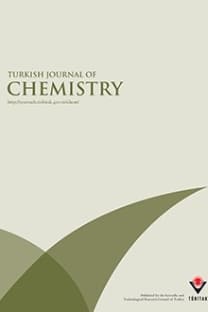Selenium and Trace Element Distribution in Astragalus Plants: Developing a Differential Pulse Polarographic Method for Their Determination
Astragalus plants have a wide range of applications in pharmaceuticals (gum tragacanth), as thickening agents in foods, and may have applications in controlling cancer cells. They are used as feed for animals and they are indicator plants for selenium. Because of their use in health-related areas it is very important to determine their selenium and trace element content with high accuracy. A new differential pulse polarographic method was established for trace element determination (10 elements) and their distribution in these plants. The Astragalus plants investigated in this work are Astragalus microcephalus and Astragalus lusitanicus, which grow almost everywhere. Their roots, stems, and leaves were analyzed separately. Since some Astragalus plants are known to accumulate selenium, the most emphasis was given to its determination. The Astragalus plants were wet digested and their DPP polarograms were taken in various media. In pH 2 acetate buffer, Se, Mo, Cd, Pb, Cr, Zn, and As peaks, and in pH 4 acetate buffer, Cu, Se, Mo, As, and Zn peaks could be separated and determined. In the presence of EDTA at pH 4, Cu, Ti, Se, and As peaks, and at pH 6, Fe, Cu, Ti, and As peaks could be separated and determined. Thus, by adjusting the pH and medium, it was possible to determine 10 trace elements in the same solution. While in Astragalus microcephalus plants the Se content was 183 \pm 15 m g/g, another plant, Elymus (Gramineae), which was taken from the same soil had no selenium, which indicates that selenium is accumulated in this kind of astragalus plant. On the other hand, no selenium was found in Astragalus lusitanicus plants. The types of Astragalus plants that accumulate selenium to the greatest degree are known to grow in Canada, USA, Russia, Afghanistan, Spain, and Turkey. According to the results, most of the elements are accumulated in the roots, but selenium was also distributed in the stems and leaves. Although large quantities of Cr were present in the roots, it was under the detection level in the stems and leaves. On the other hand, there was a level of iron present in both the roots and leaves. The proposed method is simple, fast, and cheap, does not require any preconcentration or separation procedure, and can be safely used with many biological materials.
Selenium and Trace Element Distribution in Astragalus Plants: Developing a Differential Pulse Polarographic Method for Their Determination
Astragalus plants have a wide range of applications in pharmaceuticals (gum tragacanth), as thickening agents in foods, and may have applications in controlling cancer cells. They are used as feed for animals and they are indicator plants for selenium. Because of their use in health-related areas it is very important to determine their selenium and trace element content with high accuracy. A new differential pulse polarographic method was established for trace element determination (10 elements) and their distribution in these plants. The Astragalus plants investigated in this work are Astragalus microcephalus and Astragalus lusitanicus, which grow almost everywhere. Their roots, stems, and leaves were analyzed separately. Since some Astragalus plants are known to accumulate selenium, the most emphasis was given to its determination. The Astragalus plants were wet digested and their DPP polarograms were taken in various media. In pH 2 acetate buffer, Se, Mo, Cd, Pb, Cr, Zn, and As peaks, and in pH 4 acetate buffer, Cu, Se, Mo, As, and Zn peaks could be separated and determined. In the presence of EDTA at pH 4, Cu, Ti, Se, and As peaks, and at pH 6, Fe, Cu, Ti, and As peaks could be separated and determined. Thus, by adjusting the pH and medium, it was possible to determine 10 trace elements in the same solution. While in Astragalus microcephalus plants the Se content was 183 \pm 15 m g/g, another plant, Elymus (Gramineae), which was taken from the same soil had no selenium, which indicates that selenium is accumulated in this kind of astragalus plant. On the other hand, no selenium was found in Astragalus lusitanicus plants. The types of Astragalus plants that accumulate selenium to the greatest degree are known to grow in Canada, USA, Russia, Afghanistan, Spain, and Turkey. According to the results, most of the elements are accumulated in the roots, but selenium was also distributed in the stems and leaves. Although large quantities of Cr were present in the roots, it was under the detection level in the stems and leaves. On the other hand, there was a level of iron present in both the roots and leaves. The proposed method is simple, fast, and cheap, does not require any preconcentration or separation procedure, and can be safely used with many biological materials.
